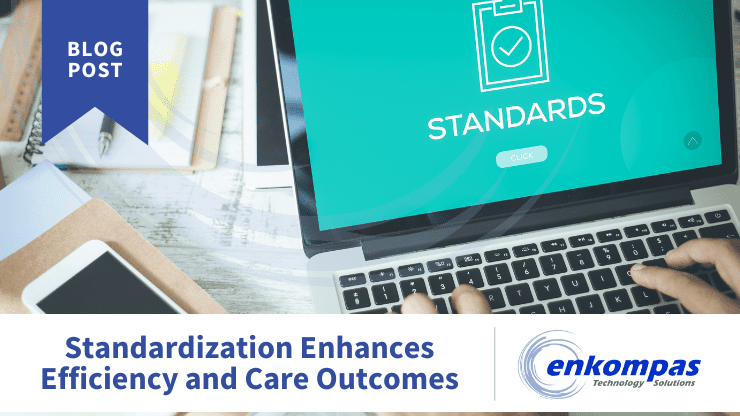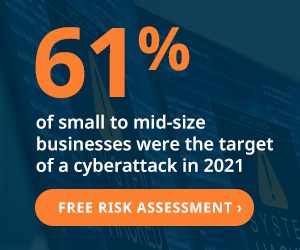In modern healthcare, Electronic Health Records (EHR) stand as pillars of efficiency and delivering quality care. These digital, interoperable systems have revolutionized how healthcare is delivered, but effectiveness of an EHR relies heavily on having EHR standards for processes and forms.
First let’s describe what standardization means for an EHR implementation. Next, we’ll dig into the crucial role of EHR standardization in streamlining operations and ultimately enhancing client outcomes within healthcare agencies.
What Is Standardization within an EHR?
Standardization is a critical component of implementing an Electronic Health Record system. Having EHR standards involves establishing and adhering to a set of consistent rules, guidelines, and procedures to ensure data integrity, interoperability, and efficient workflow within the healthcare system.
Standardizing Electronic Health Records is crucial across several areas of the EHR implementation. Healthcare and human services agencies must develop standards for each of the following areas.

Experience Growth in Your Company Through EHR Optimization
- Data – EHR standards for data formats, terminologies, and coding systems is essential for accurate and consistent recording, storage, and exchange of patient information within the Electronic Health Record.
- Content and documentation – Developing and implementing standardized templates, forms, and documentation protocols ensures consistency in the way clinical information is captured and presented across different departments, specialties, and healthcare providers.
- Workflow and process – Establishing standardized workflows and processes for tasks such as patient registration, order entry, medication management, and clinical documentation can improve efficiency, reduce errors, and enhance care coordination.
- User interface and navigation – EHR standards for the user interface, menu structures, and navigation patterns across different modules or applications within the EHR system can improve usability, reduce training requirements, and enhance user adoption.
- Integration and interoperability – Adhering to industry standards for data exchange, such as HL7 or FHIR, facilitates seamless integration between the EHR system and other healthcare information systems, enabling interoperability and data sharing across different healthcare organizations.
- Security and privacy – Standardized policies, procedures, and technical controls related to data security, access control, and patient privacy are crucial for maintaining the confidentiality and integrity of patient information.
Standardization in an Electronic Health Record implementation not only promotes consistency and quality of care but also facilitates data exchange, supports clinical decision-making, and enhances overall healthcare efficiency and patient safety.
Now that we’ve described what standardization is – and delved into the various areas where standards are needed – let’s clarify how it enhances the power of the EHR within any agency.
The Benefits of Standardized Processes and Forms within an Electronic Health Record
Any lack of standardization in a healthcare practice’s EHR processes and forms can create challenges that diminish the power the Electronic Health Record has the potential to deliver. Implementing standards not only minimizes or eliminates these challenges, but it also enhances a variety of positive outcomes. Here are just a few of them.
Consistency Across the EHR Means Consistency Across the Board
Standardized processes and forms pave the way for significant efficiency gains by eliminating redundant tasks, reducing errors, and streamlining workflows. For instance, a standardized intake form can expedite client registration, freeing up valuable time for providers to focus on delivering care. Also, if healthcare workers move from one area to another within the same practice, the transition is more seamless. The worker doesn’t have to learn how to use different forms.
By embracing standardized EHR practices, agencies can unlock a myriad of time-saving benefits, ultimately improving productivity and client satisfaction.
EHR Standards Create Efficiency Gains
Standardized processes and forms pave the way for significant efficiency gains by eliminating redundant tasks, reducing errors, and streamlining workflows. For instance, a standardized intake form can expedite client registration, freeing up valuable time for providers to focus on delivering care. Also, if healthcare workers move from one area to another within the same practice, the transition is more seamless. The worker doesn’t have to learn how to use different forms.
By embracing standardized EHR practices, agencies can unlock a myriad of time-saving benefits, ultimately improving productivity and client satisfaction.
Standardization Improves Communication and Collaboration
Standardization fosters better communication and collaboration among providers within an agency. When everyone follows the same protocols and utilizes standardized forms in the Electronic Health Record, information sharing is seamless and reliable.
This facilitates more coordinated and integrated care delivery among the providers, leading to better outcomes for clients.
EHR Standards Enhance Data Quality and Reporting
Becoming data-driven is important for any organization, but it’s particularly crucial in healthcare where health and quality of life are what’s at stake. To generate useful reports and analytics, standardized data collection is imperative to ensure the data is reliable.
Consistent data capture across service lines enables agencies to derive actionable insights, track outcomes, and make informed decisions. Moreover, standardized forms ensure that essential data points are reliably recorded, enhancing the overall quality and integrity of the data.
Standardization Ensures Compliance and Risk Management
Standardized processes and forms play a crucial role in ensuring compliance with regulatory requirements and industry standards. Adherence to standardized protocols mitigates risks associated with data security breaches, privacy violations, and legal liabilities.
Applying standardized practices across the Electronic Health Record allows healthcare agencies to navigate complex regulatory landscapes with confidence.
EHR Standards Unleash Scalability and Adaptability
Standardized EHR processes and forms are essential for scalability as agencies grow or evolve. They provide a flexible framework that can accommodate changes in regulations, technology advancements, and organizational needs.
When forms and processes are standardized, and a change does become necessary, the EHR doesn’t have to be updated in multiple places to accommodate different departments or routines. Standardization ensures that systems remain agile and adaptable, allowing healthcare organizations to thrive in an ever-changing healthcare landscape.
Electronic Health Record Standardization Enhances Outcomes
Standardizing EHR processes and forms agency wide is more than a best practice. Applying standards is a fundamental necessity for delivering efficient, high-quality care. By embracing standardization efforts, healthcare organizations can optimize efficiency, improve client care, and drive better outcomes. Prioritizing standardization helps to build a healthcare system that truly puts clients first.


